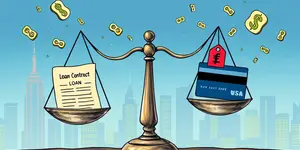
Applying for a personal loan with a low credit score can feel like standing at a locked door, watching opportunity slip away. Yet for millions of Americans with FICO scores below 580, emergency funding when you need it most can be within reach. This article explores how bad credit loans work, what “guaranteed approval” really means, and how to navigate this complex market responsibly.
We’ll uncover practical tips to protect yourself from predatory practices, highlight reputable lenders, and suggest strategies to rebuild your financial future. Whether you need urgent funds or want to understand your options, read on for an empowering, step-by-step guide.
Bad credit personal loans are designed for borrowers with limited credit history or poor scores (typically FICO under 580). Unlike traditional loans that hinge on spotless credit, these offerings focus on alternative factors: income stability, employment history, and proof of residence. While they cost more in interest and fees, they provide vital lifelines in emergencies.
Lenders often perform a “soft credit check”—one that doesn’t affect your credit score—before delivering a decision. Once approved, funds can be disbursed via direct deposit or debit card transfers. For example, OneMain Financial can deliver quick funding in as little as an hour when using a debit card, although standard approvals may take a day or two.
“Guaranteed approval” is a powerful marketing phrase, but in reality no reputable lender can promise every applicant approval. Every loan requires a minimum level of income verification, valid identification, and an active bank account. Those ads that scream “no credit check” often hide exorbitant rates or upfront fees that can trap borrowers in a cycle of debt.
Instead, look for lenders who emphasize transparent terms and responsible lending. They won’t guarantee approval in every case, but they will outline clear eligibility criteria and APR ranges before you apply, letting you make an informed choice.
Even bad credit loans have standards. While these are more lenient than prime loans, you still must demonstrate the ability to repay. Typical criteria include:
Some lenders also offer secured personal loans using collateral, such as a vehicle or savings account, which can lower interest rates and boost approval odds. Adding a cosigner with stronger credit can also enhance your eligibility and improve loan terms.
Bad credit loans typically range up to $5,000, although smaller amounts are more common. Borrowers can receive funds in as little as one hour with fast-transfer options, while standard processing can take one to three business days. Companies like Honest Loans and OneMain Financial specialize in quick disbursements for urgent needs.
Speed and accessibility come at a price, however. Higher APRs and origination fees compensate lenders for their increased risk. Always weigh the urgency of your need against the cost of borrowing.
Interest rates on bad credit personal loans are significantly higher than prime loans. Recent data shows:
Origination fees can range from $25 to $500 (or 1%–10% of the loan amount). Always calculate the total repayment—principal plus fees and interest—to understand your monthly commitment.
Choose established lenders that disclose fees upfront and offer responsible underwriting:
Each lender has unique strengths—compare APRs, terms, and customer reviews before applying.
Beware of predatory lenders who lure applicants with “no credit check” or “instant approval” promises but impose hidden fees, targeted balloon payments, or automatic rollovers into new loans. These tactics can create a debt spiral that’s difficult to escape.
To avoid scams, always:
Consumer vigilance and research are your strongest defenses against exploitative practices.
If possible, consider lower-cost options before resorting to high-rate bad credit loans:
These alternatives can significantly reduce your borrowing costs and ease repayment.
Bad credit loans with “guaranteed approval” claims can feel like a lifeline, but they often carry high costs and hidden risks. View these loans as last-resort solutions—tools for emergencies rather than routine financing.
For long-term financial health, prioritize building or rebuilding credit. Practice on-time payments, maintain low credit utilization, and explore secured credit cards or small installment loans. Over time, you can access prime rates, lower APRs, and more favorable repayment terms.
By combining responsible borrowing, consumer vigilance, and proactive credit-building strategies, you can navigate the bad credit loan landscape safely and emerge stronger on the other side.
References













